-
- RF Series
- Connector&plug-in unit
- Plug-in unit
- SD card holder
- SIM card holder
- Thimble /wire protector
- Crimping terminal
- Waterproof joint
- 短路帽/跳线帽
- 压线端子胶壳
- 屏蔽夹
- Waterproof and dustproof terminal
- Industrial&automotive&military
发布时间:2021-12-31作者来源:金航标浏览:2309
Profit pioneer
Is Sony a strong company? From the income statement, the answer is yes. It is not easy to sing bad about Japanese companies.
Nikkei Shimbun, one of Japan's most influential news agencies, wrote an article angrily at the end of 2018, "Sony's collapse is a rumor". At that time, Sony had realized a net profit of 30.5 billion yuan in fiscal 2017, which had climbed up from the low loss in 2015. The author meaningfully reminds Chinese readers that "in the business field, if you believe in lies and outdated information, it may cause serious losses". Until now, the author's judgment is not wrong. In 2020, Sony's profit reached a staggering 70 billion yuan. Companies that make a lot of money are going up.
The latest annual report shows that Sony's revenue in fiscal year 2020 is 520 billion yuan. In addition to online games (including PS game consoles), music and video (such as Columbia Pictures), its manufacturing related electronic products (such as televisions, digital cameras) and image sensors account for 1 / 3 of the overall sales.

Figure 1 proportion of Sony's revenue (source: Sony's 2021 financial report)
If broken down, the most profitable department is the game department. Sony games, led by ps5 video game console, is unmatched. In 2020, the game revenue will be $25 billion, almost the sum of Tencent ($13.9 billion) and Nintendo ($12.1 billion). The best-selling of ps5 comes from the strategy of low price or even loss of hardware, and cooperates with the subscription and payment method of online games. This revolutionary game mode makes Sony's game console not only avoid the subversion of Internet games on hardware games, but also avoid computer professional players, so as to make huge profits. But in a sense, it is also far from the tradition of "heavy hardware" in Japan.
The other most profitable sector comes from financial services. In fact, it has always been an asset presided over and left over by Sony founder Akio Morita.
The most innovative manufacturing departments, including electronic products EP & S and image sensor I & SS, accounted for 32% of sales revenue and 27% of profits. Revenues in both sectors are falling. The manufacturing industry is increasingly at a disadvantage in the whole Sony Group.
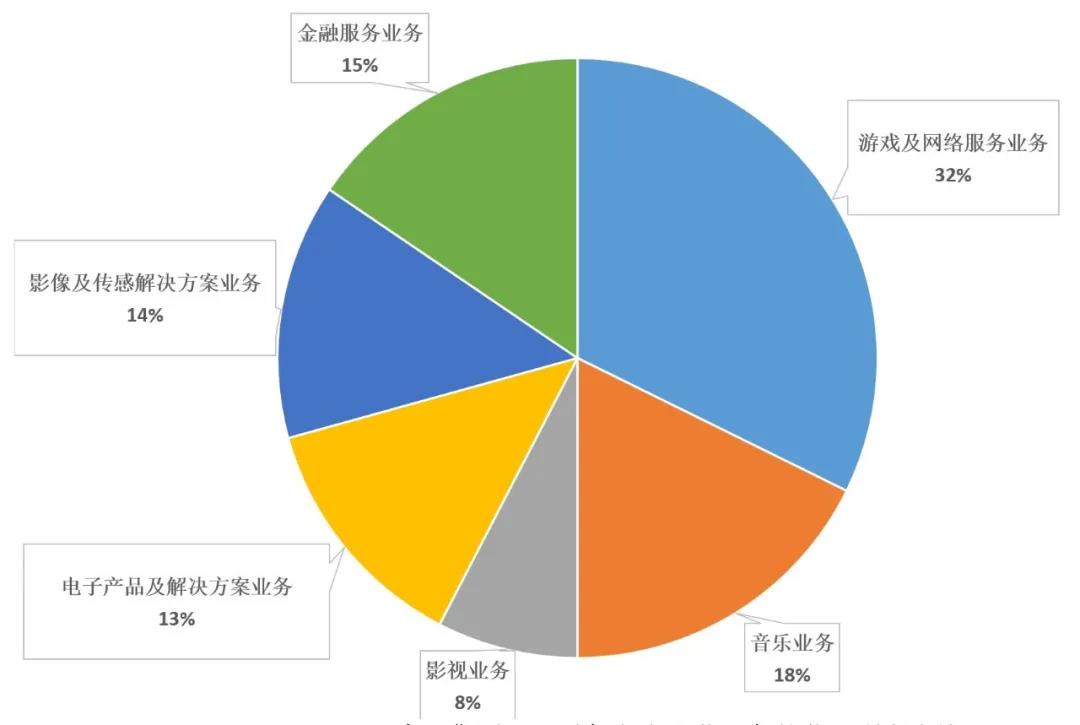
Figure 2 proportion of Sony's operating profit (source: Sony's 2021 financial report)
Sony is more like an entertainment and game company.
Myth of manufacturing
For more than 70 years, Sony has established the myth of manufacturing industry and has always been a model of manufacturing innovation. The industry generally believes that Sony is an innovator and leader; Panasonic is a market follower.
Sony started as a parts manufacturer. At the beginning, it is to make a converter, which can upgrade the radio from medium wave FM to medium and short wave. On this basis, the predecessor of Sony was established. When discussing what kind of goods the company should set up and produce, radio was the easiest thing to think of, because Japanese radio was in short supply at that time. But one of the founders, Mr. Inoue Shenda, refused to adopt the proposal and opposed the manufacture of a simple radio.
Because the ideal vision of the two founders, Akio Inoue and Akio Morita, is to give full play to their unique creativity and produce new products leading the trend of the times. If you make a traditional radio, you must buy parts from other enterprises, which will not make a unique product. Although manufacturing parts is not exciting at all, it is a realistic choice. Sony doesn't make "flowers" like radio because it doesn't have enough component level "root" technology. At that time, the simple tuner technology was not enough to support Sony to make a different radio.
This reflects the product selection brought by the layered characteristics of technology. Parts can be regarded as fulcrum technology, while end products are application technology. The two are the relationship between the center of the circle and the circular point. The applied technology rotates around the fulcrum technology, just as the earth revolves around the sun. However, if the axis is not strong enough, do not apply the circular point, although the display degree of the latter will be very high and the formed sector will be very large. However, don't make flowers without roots. This is the technical logic that Sony insisted on at that time.
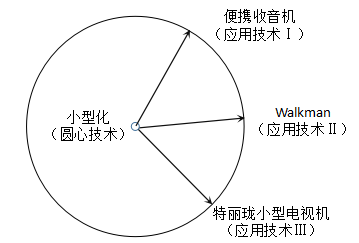
Figure 3 technical centripetal force
Sony's terminal products began with tape recorders. Due to the accumulation of technology in signal tuners and mixing devices, it began to turn these technologies to recorders. After the steel wire recorder scheme was abandoned, Sony developed a tape recorder. At that time, tape recorders and tapes were generally separated. For example, after the war, ampex amp company in the United States became the leader in the field of tape drives, while the tape was produced by 3M company in the United States. Sony went hand in hand to solve the problem of baseband materials. Finally, the first batch of tape recorders were completed in 1950. Although they have good performance, they are large and bulky, weighing 35 kg. Although the product was good, there was no consumer market at that time.
In order to promote this large recorder, Shengtian and Jingshen re divided their labor, and the former went to the road of focusing on marketing. The super heavy recorder was first promoted to the court, because a large number of live records need to be completed, and the talent of stenographers is very scarce. The court regarded the recorder as a good tool. The second is the school, which needs to learn English repeatedly with a tape recorder.
It is a common way for technology to mature to promote the process grinding of products in the marginal market. Before finding a large number of consumer products, find enterprise users first, and you will get valuable breathing opportunities. Enterprises took the lead in using tape recorders, allowing Sony's tape recorder business to survive.
Then came the era of transistors. Western Electric, which has transistor technology, does not know what consumer products it can make. Although Sony felt its great potential and obtained patent authorization, it was unable to produce useful products immediately.
At this time, the market intuition of Founder Morita began to play a role. The Japanese have always been lovers of exquisite and small objects. Folding and scrolling are a living habit. Morita keenly captured the Japanese nature. In 1953, Morita established the "portable" policy and made radios that were easy to carry and put in pockets.
At this moment, Sony established the portable gene. Its technology is based on this gene. In other words, its root technology lies in portability and compactness. Two years later, such genes produced rich fruits. In this year, Sony's name was officially confirmed, and the first person to wear this brand was the world's smallest radio. This small transistor radio, invincible, defeated the earliest transistor radio of Texas Instruments.
Later, Sony's growth stories were carried forward by this gene. After the portable radio, there was a small solid-state transistor TV, then the Walkman Walkman, which was popular all over the world in 1979, followed by the watchman portable flat screen TV, and then the Discman CD Walkman. Sony has developed hand-held cameras and small tape recorders, as well as the first portable 3.5-inch computer floppy disk.
Sony's home video recorder also comes from the original huge video equipment for TV stations through miniaturization. The famous Betamax video format is the product of this miniaturization idea. After a thrilling technical route war with the VHS format of the Japanese JVC, it was defeated. Although the technical route failed (for example, it can only store for 1 hour, while the opponent can store for more than 2 hours; the other party took the alliance ecological route, etc.), it still greatly inspired people's imagination of the small video recorder market.
Similarly, when competing for the American TV market, the United States is taking the route of large-scale. At that time, there were three independent electron guns at the back of the picture tube. Sony is committed to the integration of three guns, so as to pursue small and efficient. This is the later widely handed down "telilon" picture tube. This unique color TV imaging system made Sony TV "easy to move" and "high picture brightness", thus establishing its long-term dominance in the TV field. Miniaturization technology has always been Sony's deep-rooted genetic ability.
The Post-70s and post-80s are the most likely to feel the experience and excitement created by Sony. At that time, Sony was like a God. In 1995, Walkman and then disckman were time-class product idols. In the field of consumer electronics, Sony has created countless product myths. Its derivatives have also become legends. Walkman's light and small earphones had a sales performance of 50 million pairs in 1986. This is a comprehensive victory for Sony's "miniaturization", the center of the circle technology achievement group.
Rich and colorful products, the same genes can be found everywhere. This is the internal technical logic of enterprise diversification. With the center technology, many landing applications can be found. It's like a clock full of the whole dial, from 12 o'clock, to 6 o'clock, and then to 11 o'clock. Under the control of circle center technology, the application scene can occupy all sectors along the circumference. Sony has occupied the whole clock disk.
Gene destruction
However, discordant murmurs began to appear. The terminator of Sony pointer comes from another completely different business, not a tape recorder, not a video recorder, not a TV.
In October 2001, in the auditorium of Apple headquarters, Steve Jobs officially announced the opening of the new generation of digital music world with an iPod the size of a poker box, "put 1000 songs in your pocket!". This sounds like a CD player that can store up to dozens of songs has suddenly changed from a young man to a kindergarten child. This is a new format of music. The MP3 format studied by Fraunhofer in Germany was re developed by jobs. This card size ultra-thin super capacity machine did not attract Sony's attention.
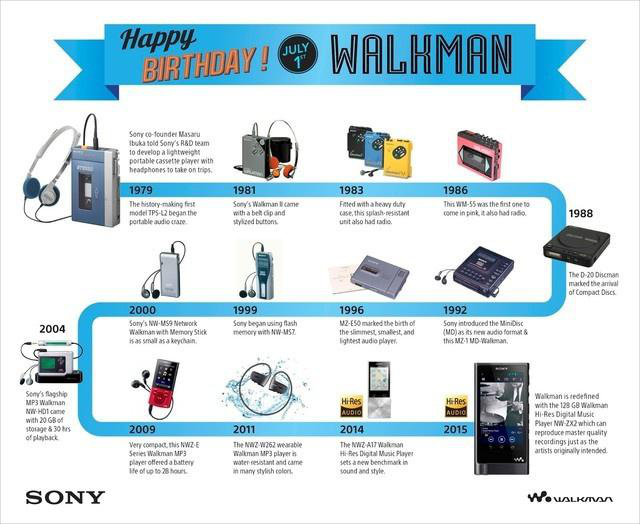
Figure 4 Changes of Sony Walkman
The online version of Walkman launched the previous year made Sony confident that it had catered to the rise of the Internet at that time. However, Sony did not realize that the portability foundation on which it depended was being bombed by a ground penetrating bomb flying from overhead. Waiting to wake up, Sony also launched its flagship MP3 format product in 2004. Portability is just a small threshold, and streaming media is the king in the field of mass music.
The collapse of Walkman, a star product, seems to be just a product of Sony falling into the embrace of the old era. However, it loosened Sony's axis technology and shook the foundation of Sony's overlord empire. This is a profound metaphor. Subsequently, Sony mobile phones, which dominated the 2G and 3G era, also showed a decline in the 4G and smartphone era. In the 5g era, it basically disappeared. Although Sony Dafa (Sony powder's praise for Sony) causes consumers to cheer from time to time, it is a cyclical repetition of the old grand occasion. In less than two decades, Sony almost completely handed over its former dominant position in the field of consumer electronics such as TV, mobile phone and headset, while the whole industry of digital camera is shrinking.
Sony image sensor is still in a dominant position, and half of the mobile image sensors in the world are Sony's world. But the pursuers of South Korea and the United States have been staring at them. Samsung Electronics has been following closely, accounting for 20%. Sony invested 100 billion yen to build new factories in China in the past two years, hoping to increase its market share to 60% by 2025, so as to get rid of Samsung, an annoying follower. However, Samsung has never been willing to show weakness. With the advantage of the whole industrial chain, it only sticks to the first place. Moreover, Korean mobile phones and domestic mobile phones have also begun to open the market to Samsung. In addition, the loss of Huawei, the largest customer (glory sale) at the end of last year, has left an ominous omen for Sony, the Pearl of manufacturing.
It can be said that Sony manufacturing may have become an illusion of the past at the peak of Japanese manufacturing.
In 1953, Sony established the technical advantage of portable gene. In 1979, Walkman, the world's best-selling Walkman Mini recorder, confirmed its dominance in the portable field. Miniaturization is its center technology. However, after 22 years, Sony's portable mobility advantage was destroyed from the product level by Apple's music player iPod; Then, in the era of smart phones, its genes were completely destroyed. As the former headphone overlord, he also gave up to apple. In 2020, the global real wireless headset market will be about 300 million pairs, while Apple will occupy nearly 40% of the market. It can be said that Apple accurately copied Sony's empire more than 30 years ago, and the territory is much larger.
In the mobile era, the technical barriers of miniaturization have disappeared. By the second decade of the 20th century, Sony had been unable to win in terminal products through its core manufacturing capabilities. Sony, which has lost its genetic advantage, must find a new center technology.
Sony's shadow
Sony changed its name to "Sony Group" in April this year, which is to make way for the new business pillar, from electronic manufacturing enterprises to entertainment centered comprehensive enterprises.
Such a strategic transformation is not surprising. As early as 2018, when Kenichiro Yoshida became president of Sony, he proposed to strengthen the entertainment business. In fact, under Yoshida's leadership, Sony's acquisition and investment in this field totaled more than 30 billion yuan. What a big deal.
There is a reason behind it, and the shadow of American shareholders began to emerge.
Sony is only responsible for funny! Third point, an American radical investment fund, has held $1.5 billion worth of shares in Sony. In recent years, it has been calling on Sony to spin off its semiconductor business, sell Sony financial shares and focus on becoming a world leading entertainment company. Americans mean that after the spin off, the new SONY company has become a creative entertainment leader in the game, music, picture and electronic industries.
In fact, radical American shareholders (which is a shadow of the increasingly dark sky made in Japan) expect Sony to simply become an entertainment company. Comic tasks such as spider man use music and game consoles to arrange people's entertainment, just like Disney.
This is not surprising. The global music industry is now mainly competed by the three record giants. One of them is Sony, with a revenue of about 30 billion yuan. Although it lags behind the United States Universal Music UMG (RMB 43 billion in 2019), it exceeds Warner Music Group. In the dizzying stage of the music industry, Sony stillThe stars are bright。
This is really funny history.
When the U.S. - Japan trade war broke out in the 1980s, Japan's two iconic companies, Toyota and Sony electronics, became a thorn in the eye of the U.S. trade delegation. On the contrary, Sony President Akio Morita's unreasonable and stubborn resistance to the Americans has been respected by the Americans. Now, 35 years after the Plaza Agreement signed by Japan in 1985, the tough guy stars made in Japan have really lived as the United States hopes. With South Korea and China catching up in the electronics industry, Sony, whose hardware profits are squeezed, may not have more choices, and it is more and more difficult to refuse the trap set by profit beauty.
Losing the foundation of hardware portability, Sony failed to seize the rise of software closely related to electronic products and missed a great opportunity for technological transformation. Perhaps this is a common problem made in Japan. Almost all Japanese electronics giants easily stumble in software. Sony's image sensor CMOS is the first in the world and can be said to have the best hardware. The mobile phone photography depends on hardware and algorithm. Sony's algorithm exists like dust. The semiconductor department is responsible for the development and design of Sony CMOS, while the alpha anti camera department is responsible for the algorithm.
Sony executives have disclosed that the camera department does not want to have a better experience of mobile phone photography, which will affect the sales of cameras. Therefore, many "real kung fu" have not been shared with Sony mobile. If you can't even get the best picture quality, Sony's mobile phone will naturally plummet. This is also a Japanese inner roll. Although these departments have been merged later, they intend to form a joint force of "one Sony". But it is easy to say that the sectoral gap is the most difficult to bridge.
This huge schizophrenia has been tearing the giant. Cooked rice made of peanuts and rice grains is angular. The former president of Sony has always advocated "eating the same pot of rice" to promote cooperation between different businesses. The current president is also doing the integration of entertainment. Electronic x music, electronic x film, game x film and various combinations seem that entertainment is gaining the upper hand.
The figure of foreign shareholders is becoming a shadow of Japan's manufacturing industry. Toshiba's chairman was dismissed alive at the shareholders' meeting at the end of June. The radical voters are from foreign investors. Recently, a third-party lawyer reported that Toshiba's management was suspected of colluding with the Japanese government to exclude foreign shareholders, causing strong repercussions. It was the foreign shareholders who played a decisive role in the termination of the chairman's class. For example, Bank of Norway and Singapore investors voted no confidence.2015Since, Toshiba has been in constant crisis. Last year, it was not easy to invite itOnce upon a timeSony chairman YongShan zhilaiBe chairman。althoughabilityStrong, but Toshiba's voting rights have gradually been handed over to foreign shareholders. Japan's cautious corporate governance is being besieged by foreign investors as bold and radical as vultures.
stage a comeback?
So did the Sony Walkman disappear? either. They are now a hobby for enthusiasts and are expensive. Many years ago, they broke the ice from the distant Arctic Circle, passed through the hot peak, and now they return to the Arctic circle. In other words, they return to the edge. It's really unpredictable.
Aibo is a physical electronic pet launched by Sony in 1999, but it is no longer sold after the seventh year. In 2018, Sony unexpectedly made a comeback for this robot dog Aibo, and endowed it with artificial intelligence and human emotion. The Sony robot dog sold in the United States, as a companion robot, gives full play to Sony's advantages in sensors and OLED screens. Coupled with the feelings established by machine learning algorithms, it can blink or smile from time to time. It was also a sensation at that time. But this product did not continue to be popular. In the United States, Illinois is even banned from sale because of privacy issues.
Now it seems that this project is just a transitional attempt, because the e-dog team has been quickly given a greater mission, that is, to develop two unusual fields: UAV and pure electric vehicle. At the American consumer electronics show in the past two years, Sony launched samples of pure electric vehicles and UAVs respectively. After all, both seem to have been electronic, and this is what Sony is best at.
Sony electronics released its first professional UAV airpack S1 in June this year. This is an entry-level model, which can be equipped with Sony Alpha series non anti camera, and the flight speed can reach 90 kilometers per hour. The price is also very expensive. The retail price is nearly 10000 US dollars. I don't know where such price ambition comes from? After all, Sony is playing the role of a challenger this time.
This is not the first time Sony has entered the UAV track. In 2015, Sony and Tokyo robot company ZMP jointly founded the UAV company aerosense, but it did not perform well. The major lists are dominated by enterprises from China, the United States and France. The overlord of civil UAV is Dajiang, China, which has dominated the world with a suffocating 80% market share, and the cost is less than 50% of that of Japan, with low price and high quality. Even with the technical support of images and sensors, Sony can hardly get the upper hand.
In order to protect local enterprises, the Japanese government also sacrificed the magic weapon of "national security" and planned to prohibit Chinese-made UAVs from entering Japan. The new control rules came into effect in April this year. But the narrow territory may be difficult to protect Sony's UAV ambitions.
hit out in all directions. At the beginning of last year, Sony made a sensation. The car body is manufactured by magna, Canada, the world's largest automobile foundry. A year and a half have passed. Recently, Sony vision-s prototype electric vehicle has also begun to be exposed. Equipped with 40 sensors, automatic driving technology is expected to reach L4 level. But such a secretive car is not dazzling in front of the new power of electric vehicles, and Sony brand may not give its electric vehicles much extra points.
Can Sony's two major tests in the manufacturing field, pure electric vehicles and UAVs, succeed? This is like a soul test of "where to go in middle age". Sony has never been able to achieve integrated software and hardware development before. This time, can the two new fields in charge of the electronic robot dog team continue to integrate in the way of "electronic entertainment"? The future is unpredictable.
Notes: the moral of Apple spots
The pioneers of hard technology in the past are aging. Apple copied the myth of Sony and redefined consumer electronics, while manufacturing is Apple's muscle that has never given up. Tesla electric vehicle is also a fan of manufacturing. Sony, however, began to hesitate in the manufacturing field. Just like a soft apple in the manufacturing industry, spots began to appear. However, Sony is also happily reborn on another happy track, just as the "pacifier culture" expected by the United States. This may be a fable of the decline of Japanese manufacturing.
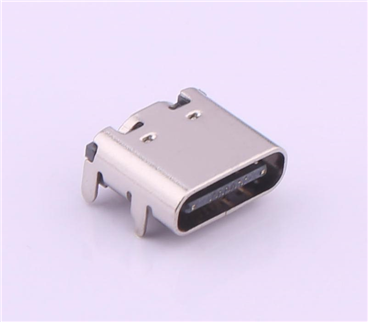


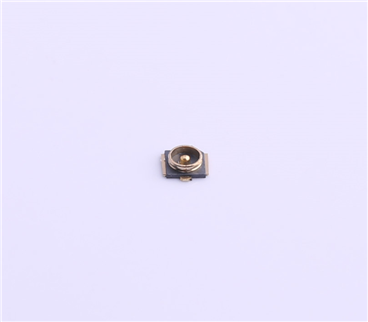
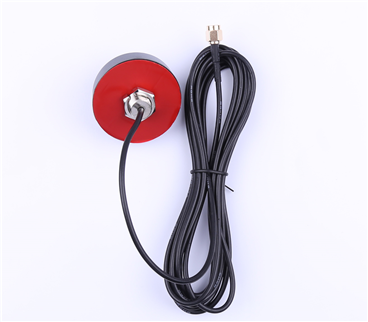
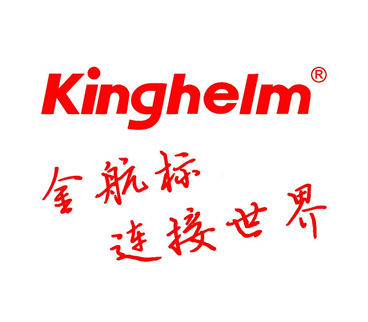





Copyright © Shenzhen Kinghelm Electronics Co., Ltd. all rights reservedYue ICP Bei No. 17113853
